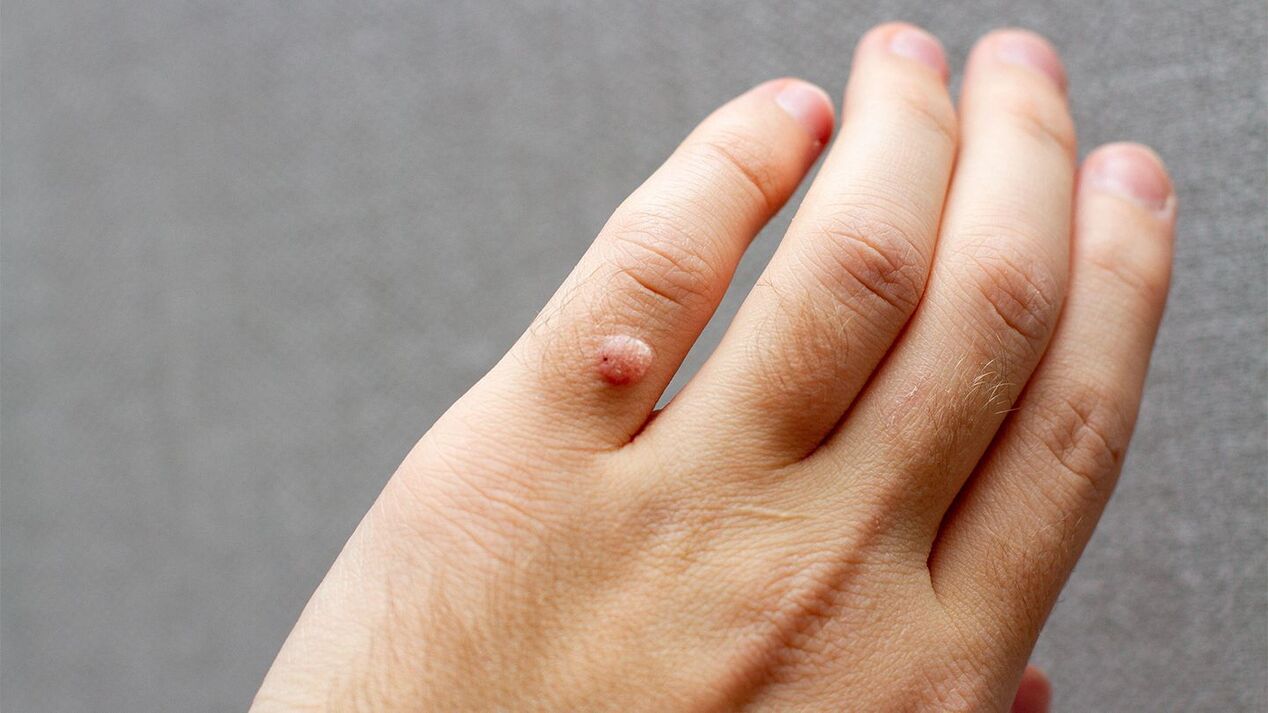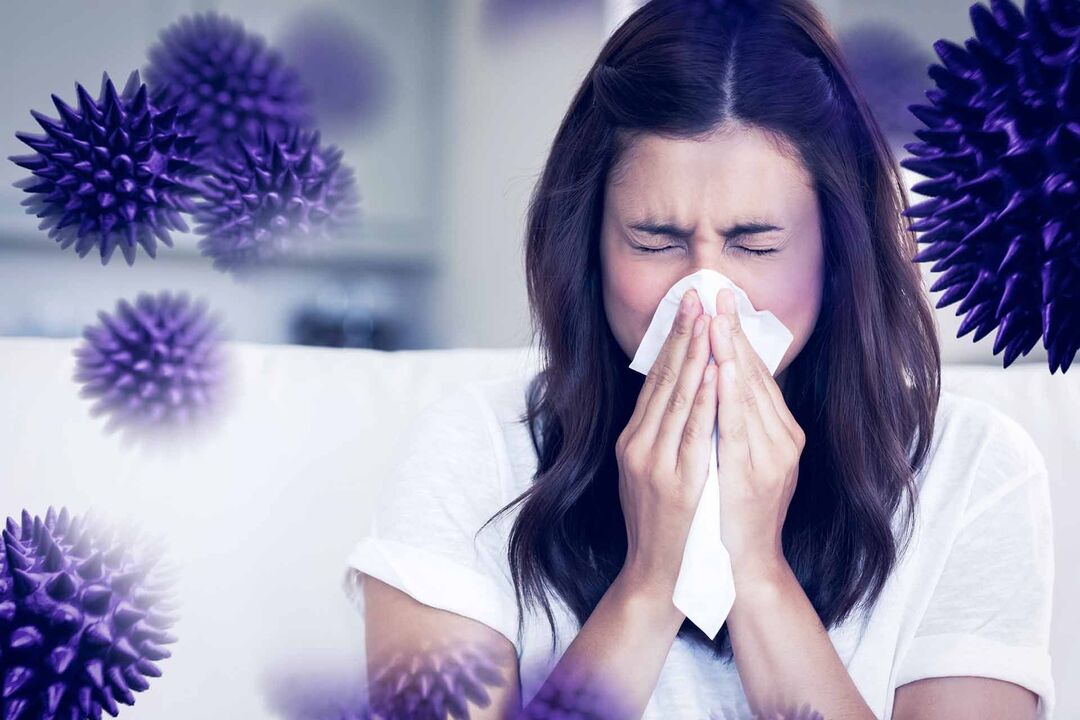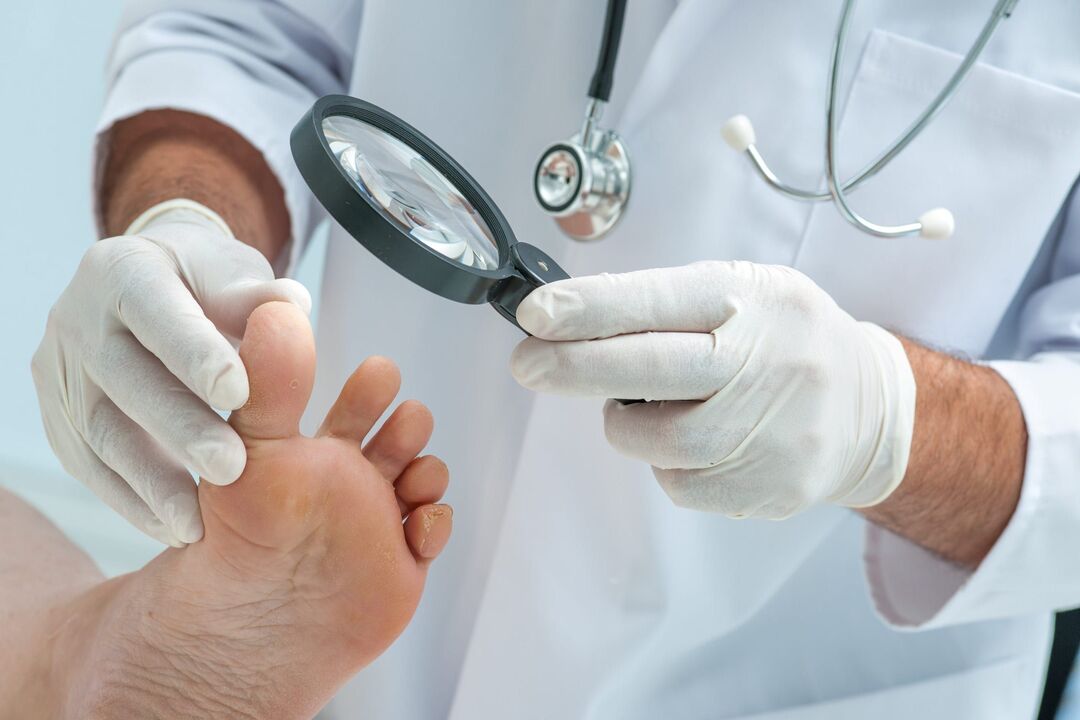First you need to understand what warts are. It is essentially a skin disease characterized by the appearance of small formations. The size of these formations varies from 1 mm to 1 or more centimeters.
The cause of warts is viral. They can be transmitted from person to person by a simple handshake or by the use of objects that have been used by a sick person. The incubation period can last several months. So, when warts form on your body, it can be very difficult for you to remember who might have "given" them to you.
It must be said that there are different types of warts, so the attitude towards them should be extremely delicate. They can be located on the back of the hands, on the face and even on the scalp. On the feet, warts are usually found on the soles of the feet. If they are painless on the arms, they can cause a lot of inconvenience on the legs. Their formation can be favored by the perspiration of the feet and the pressure of shoes.
A special place is occupied by juvenile warts that arise during adolescence. These warts are usually small and are located on the hands and face. For any type of wart, you should consult a doctor to rule out the possibility of any other skin disease.
Thus, genital warts are sometimes confused with warts, requiring consultation with a venereologist and a urologist. Any new growth on the skin should require maximum attention. Sometimes a tumor on the skin is mistaken for a wart, which is extremely dangerous, especially if you plan to remove it. In this case, you should not turn to folk remedies!
Such procedures should only be carried out by a professional doctor, first making sure that it is indeed a wart. It is not recommended to remove all warts; this method is used as a last resort: if the wart causes discomfort or bleeding, if the wart causes aesthetic discomfort, if the wart has reached a significant size, if it grows.
Otherwise, it is better to treat the warts. The treatment must be carried out by a doctor and you must be supervised by him during the entire treatment. It must be said that inappropriate treatment can contribute to the degeneration of a wart into a malignant tumor. Therefore, contact only specialists.
Types of warts

Warts are most often diagnosed during childhood and adolescence, but can also occur in adults. In medicine, the following types of warts are distinguished:
- Simple/vulgar.The most common type of skin tumor, in 70% of cases it is diagnosed in children of school age. Most often, warts of this type appear on the hands, but they can also be present on the edges of the lips and on the neck. Simple warts are distinguished by the presence of a larger "mother" wart - if it is removed, smaller tumors disappear.
- Flat/young.They are rare – only up to 4% of cases diagnosed. They are located on the backs of the hands, along the edges of the lips, on the head of the penis and on the oral mucosa.
- Palmoplantar.They appear in places where the pressure from uncomfortable shoes is most active. The diagnosis of this type of wart is often difficult, because a specialist must differentiate the tumor in question from corns and calluses.
- Wire-shaped.It has a specific appearance - a small "tail" made of fine leather, there can be several of them and they are always arranged in a "cluster". It is most often found in the armpits, neck and under the breasts.
Methods for removing warts on the body and hands directly depend on the type of tumor that will be diagnosed in the patient.
It is worth knowing another characteristic of warts: they do not have an exact description of "appearance". For example, a plantar wart may be a small rounded bump with a dark center, but a simple wart is a growth on the skin that has a heterogeneous structure. The simplest way to answer the question "what does a wart look like" is if it is a threadlike type: an "icicle" appears on the skin, without causing pain or irritation. It should be noted that frequent rubbing of a wart leads to its inflammation and irritation - it turns red and can cause pain.
Where do warts come from?
This is all due to the human papilloma virus (HPV), which is most often transmitted through direct contact with a wart or the personal belongings of an infected person. Four of the dozens of HPV types are responsible for causing warts on the skin.
HPV can easily be described as "tricky. "A person may not suspect for a long time that he has become the owner of HPV.
After infection, the virus is localized in the upper layer of the epidermis and may not make itself known for a long time. But as soon as the protective mechanisms weaken, the virus becomes active and manifests itself in the form of one or more warts.
From the moment of infection to the appearance of skin formations, it can take from a week to several months.
Locations
Which doctor to contact for warts directly depends on the location of the growths.
Depending on the variety, warts can develop all over the body, including:
- on the leg and arm, on the foot;
- in the armpits, under the breasts and on their surface;
- on the face, neck and head;
- on male and female genitalia;
- on the mucous membrane of the vagina, esophagus, larynx;
- in the mouth. on the tongue and the inside of the cheeks and lips;
- on the body under clothing.
Reasons for the appearance

It is very easy to get the human papilloma virus (HPV).
It is enough to have close contact with a person who has growths on the skin.
However, the disease does not appear immediately and warts may not begin to develop until several months or years after infection.
Factors influencing HPV activity:
- weakened immunity;
- exacerbation of chronic diseases;
- stress;
- malnutrition;
- bad habits;
- passive lifestyle.
What to do if a wart has already appeared
Let's return to the survey results. Only 28% of those surveyed with warts consulted a doctor. It seems that the prospect of surgery for removal is scarier than the wart itself. 34% of study participants tried to remove warts on their own, and 16% decided not to take any action, as they did not attach any importance to it.
Why you need to get rid of warts
For those who are still unsure whether to remove warts, it is important to know the following.
- First, warts are contagious. To do this, direct contact with the wart or the personal hygiene items of its carrier is sufficient.
- Second, warts tend to "take over territory, " that is, spread to healthy areas of the skin. This process is called autoinoculation (autoinfection).
Obviously, it is easier to treat warts in the early stages of the disease, which will save time, effort and money in the future. In addition, in pharmacies you can buy products for self-removal of warts.
When to consult a doctor
- if the wart quickly changes shape, color or all together;
- if the wart has an uneven color;
- if the borders of the wart are blurred (in this case, it is probably not a wart);
- if the wart hurts or is constantly injured (this increases the risk that it will develop into something more serious);
- if the number of warts gradually increases;
- if the wart bleeds or itches;
- if a wart has formed in the genital area.
Which doctor treats warts in children and adults
If growths appear on any part of the body, you should contact a doctor specializing in the treatment of skin diseases - a dermatologist.
- It is he who carries out the examination and decides whether additional diagnostics are necessary (blood test, PCR test, biopsy).
- In some doubtful cases, when a wart shows signs of malignancy, a dermatologist may recommend consulting an oncologist or dermato-oncologist.
- In most cases, the doctor decides to remove the wart, after which its tissues are sent for histological examination to ensure the absence of malignant signs.
- Warts on the mammary glands in women can cause breast cancer and require examination by a mammologist.
Wart Removal

Wart removal is a radical method and is carried out in several ways. Warts can be removed using a laser. Along with this, cryotherapy and electrocoagulation methods are used. You can remove warts effectively using homeopathic medicines. Each method has its own strengths and weaknesses.
When choosing a method for removing a wart, the doctor is usually guided by the location of the wart on the body. So, laser removal can leave scars. Scar formation is sometimes observed after using the Surgitron device, so it is the doctor who should choose the method of removing warts: depending on the location of the warts.
Cryotherapy and electrocoagulation are gentle methods for removing warts. Electrocoagulation is carried out using a special device using high frequency current. Following the use of this device, the temperature of the tissues increases and the wart is destroyed, leading to the death of the virus.
Cryotherapy is also cauterization, but only with liquid nitrogen. The procedure is completely painless and leaves no scars. Speaking about these two methods, it should be noted that their use eliminates contact with blood, which is extremely important. You can only trust a doctor experienced in this field to remove warts.
After removing the warts, you need to think about how to avoid getting this infection again.In no case should warts be torn off or tied with a thread at the base so that they fall off on their own! Such unreasonable behavior can lead to serious health problems - for example, the resulting wound may become infected, and due to the constriction of the tumor base, blood flow may be disrupted.
A dermatologist or cosmetologist will tell you how to get rid of warts on the hands of children and adults, what procedures will help you forget about tumors on the body and face - you can contact one of these specialists. There are three main methods for getting rid of warts:
- Laser therapy.Generally, this method is used to remove warts in the most sensitive and painful places, or if the patient wishes to avoid scarring. Removing warts on the face with a laser is the optimal solution, because this procedure is painless, does not require a long recovery period and subsequently does not leave any scars on the skin.
- Cryodestruction.This involves the use of liquid nitrogen, which literally burns the tumor without leaving any marks on the skin, although in some cases a small scar is possible. After removing the warts with liquid nitrogen, the patient should avoid exposure to direct sunlight; in the future, a small whitish spot may remain at the site of the intervention.
- Drug therapy.It is used in conjunction with the methods above. There are many drugs that have a local effect and help destroy the wart faster. The most effective remedy for warts is celandine extract, which is applied pointwise to the growth. You should not use celandine to treat warts yourself - if its juice comes into contact with healthy skin, it causes severe burns.
Getting rid of this type of skin tumor must be complete. It is not enough to consult a doctor to find out the cause of warts on the fingers or face: you must follow all prescriptions and recommendations of a specialist. Even with proper treatment, relapses of the disease are recorded quite often - in 40-50% of cases warts reappear.
More information about what warts are, which doctor to contact to treat a plantar wart and what is meant by the term "general therapy for human papillomavirus" can be found on the pages of our website.
Is it possible to remove warts yourself?
Warts can be removed yourself at home, but only after diagnosis by a specialist.
There are special burning pharmaceuticals that can eliminate the growth after the first use. They have a cauterizing and necrotizing effect.
These medications are toxic and can cause burns to the tissue surrounding the wart. They must therefore be used with caution. It is not recommended to remove warts at home in areas with particularly delicate and sensitive skin (face, neck, mammary glands and genitals). You should also make sure that the wart is completely gone and no roots or other parts of it remain. The ability of warts to reproduce is so great that even a small piece of tissue can become a source of infection in healthy areas of the dermis.
When using pharmaceutical drugs, you must strictly follow the instructions for use and pay special attention to contraindications. Most of them are prohibited for use in children, pregnant and lactating women.
Warts are external manifestations of an unsatisfactory internal state of the body. It is important not only to get rid of the symptoms of the disease, but also to continually fight the virus. The human immune system is able to independently cope with the causative agent of the disease if it receives all possible help. To do this, it is enough to lead a healthy and active lifestyle, strengthen the body through sports and healthy eating.
Complications
Under certain conditions (for example, in case of infection with sexually transmitted infections, decrease in general and / or local immunity), anogenital warts can enlarge and develop, thereby worsening a person's sex life and reducingsignificantly improve their quality of life.
In addition, inflammation and suppuration of anogenital warts, as well as their ulceration, can develop due to prolonged mechanical impact on them. In rare cases, their malignant degeneration is possible.
Recommendations for patients suffering from warts
- Since two thirds of cases disappear spontaneously within two years, warts can be observed without treatment. As old lesions disappear, new warts may appear. This is not a consequence of therapeutic failure, but is part of the natural history of HPV infection.
- Treatment often takes several weeks or months, so patience and perseverance are required for treatment to be successful.
- Tools used to remove warts, such as nail files and pumice stones, should not be used on healthy skin or by other people. For the same reason, if the warts are located on areas of the skin that contain hair, it will be necessary to use epilatories or electric razors to remove hair from these areas, or even not to remove hair at all, thus limiting the spread of the warts.
- To monitor and evaluate the results of treatment, a repeated visit to the doctor is necessary. • If the patient is self-performing the treatment, he or she may, at his or her discretion, schedule follow-up visits with the physician.
Prevention
Preventative measures include:
- vaccination with a quadrivalent vaccine (against HPV types 6 and 11, 16, 18);
- exclusion of casual sexual contact;
- use of barrier contraceptive methods (condoms);
- compliance with personal hygiene rules;
- timely and adequate treatment of infectious and inflammatory diseases of the pelvic organs;
FAQs
Which doctor treats warts?
For warts, it is best to consult a dermatologist. A dermatologist specializes in treating skin conditions and is experienced in wart removal.
Is it possible to consult a general practitioner with a wart problem?
Yes, you can consult a general practitioner, such as a general practitioner. He will be able to carry out an initial consultation and, if necessary, refer you to a specialist – a dermatologist.
What wart treatment methods do doctors use?
Doctors may use a variety of methods to treat warts, including cryotherapy (freezing the wart with liquid nitrogen), chemical removal, electrocautery (using an electric current to remove the wart), andlaser removal. The doctor will choose the most suitable method based on the characteristics of the wart and the individual characteristics of the patient.
Useful tips
Tip #1
Consult a dermatologist. A dermatologist specializes in skin conditions and can help with warts. He will carry out an examination, make a diagnosis and propose the most effective treatment.
Tip #2
Consult an oncodermatologist. Warts may be associated with the human papilloma virus (HPV), which can cause skin cancer. A dermatologist oncologist specializes in the diagnosis and treatment of skin cancer. He can therefore carry out additional tests and recommend appropriate treatment if necessary.























